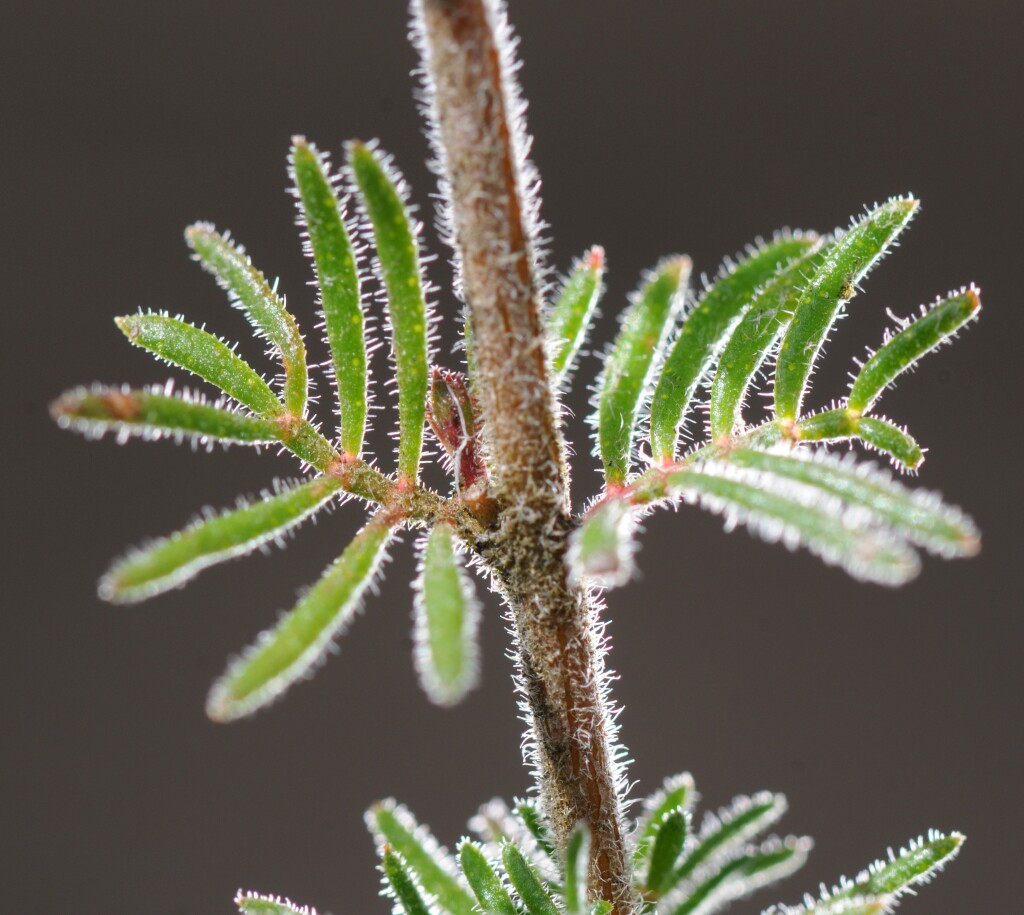Boronia pilosa
Labill. Hairy BoroniaErect shrub to 1 m high (rarely to 3 m); branchlets with 2 rows of hairs between decurrencies. Leaves pinnate with 3–7 usually congested leaflets, 6–16 mm long, 4–17 mm wide overall, glabrous or pilose; leaflets narrowly obovate, 1.5–10 mm long, 0.5–1.5 mm wide, obtuse, margins entire, flat or slightly recurved; petiole to 2 mm long. Inflorescence terminal or axillary, (1–)3–6-flowered; peduncles and pedicels each to 5 mm long. Sepals narrow-triangular, 1–3 mm long, imbricate, glabrous to pilose; petals 4–7 mm long, pink, imbricate, midrib not raised, deciduous; stamen filament pilose; style short, hirsute, stigma capitate. Follicles glabrous, 2.5–3 mm long; seeds c. 2 mm long, black, shiny, smooth.
LoM, MuM, Wim, GleP, Brid, VVP, GipP, OtP, WaP, CVU, GGr, DunT, NIS, EGU, HSF, HNF. Also SA.
A number of varieties, all based on Tasmanian material, have been described for B. pilosa. These varieties are not in use and most can be placed under the type subspecies (subsp. 1). There are specimens intermediate between the 2 subspecies in the Grampians and around Mt Richmond near Portland.
Duretto, M.F. (1999). Rutaceae. In: Walsh, N.G.; Entwisle, T.J., Flora of Victoria Vol. 4, Cornaceae to Asteraceae, pp. 153–197. Inkata Press, Melbourne.
 Spinning
Spinning

